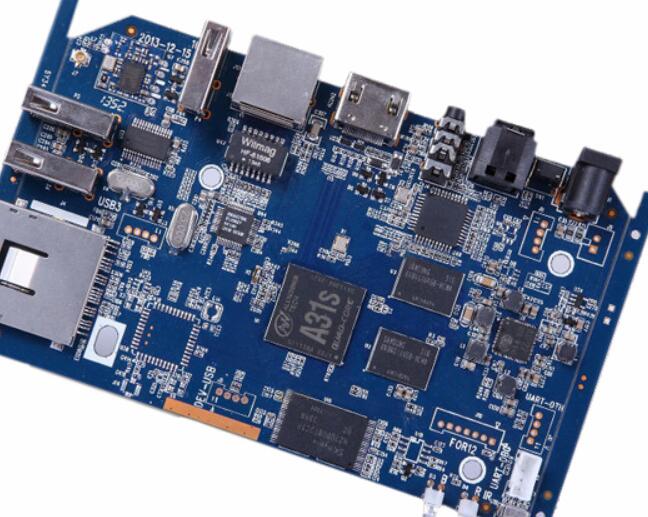PCBA pollution will have an adverse effect on the reliability and stability of the circuit board. In order to improve the reliability and quality of the product in PCBA processing, Wanlong Lean will strictly control the production process and technology, and clean up the PCBA pollution in time to ensure the product. Quality and reliability.
PCBA board cleaning method, inspection and precautions in PCBA processing
Common cleaning methods
1. Water-based cleaning process: spraying or dipping
2. Semi-aqueous cleaning process: rinse with water after hydrocarbon cleaning
3. Vacuum cleaning process: polyol or modified alcohol
4. Gas phase cleaning process: HFE, HFC, nPB (n-bromopropane), azeotrope
PCBA cleanliness detection method, how to check whether PCBA is clean

1, visual inspection
Using a magnifying glass (X5) or optical microscope to observe the PCBA, by observing whether there are solid flux residues, tin dross tin beads, unfixed metal particles and other contaminants, to assess the cleaning quality. Usually the PCBA surface must be as clean as possible, and there should be no traces of residues or contaminants. This is a qualitative indicator. Usually, the user’s requirements are the goal, and the inspection criteria are set by yourself, and the magnifying glass is used for inspection. The characteristic of this method is simple and easy to implement. The disadvantage is that it cannot check the pollutants at the bottom of the components and the residual ion pollutants. It is suitable for occasions with low requirements.
2. Solvent extract test method
Solvent extraction test method is also called ionic pollutant content test. It is an average test for the content of ionic pollutants. The test generally adopts the IPC method (IPC-TM-610.2.3.25). It is to immerse the cleaned PCBA in the test solution of the ionic pollution analyzer (75%). +2% pure isopropanol plus 25% DI water), dissolve the ionic residue in the solvent, carefully collect the solvent, and measure its resistivity. Ionic contaminants usually come from the active substances of the flux, such as halogen ions, acid radical ions, and metal ions produced by corrosion. The result is expressed in the equivalent number of sodium chloride (NaCl) per unit area. That is, the total amount of these ionic pollutants (only those that can be dissolved in the solvent) is equivalent to the amount of NaCl, not necessarily or only NaCl on the surface of PCBA.
3, surface insulation resistance test method (SIR)
This method is to measure the surface insulation resistance between conductors on the PCBA. The measurement of the surface insulation resistance can point out the leakage of electricity under various temperature, humidity, voltage and time conditions due to pollution. Its advantage is direct measurement and quantitative measurement; and it can detect the presence of flux in a local area. Because the residual flux in PCBA solder paste mainly exists in the gap between the device and the PCB, especially the solder joints of BGA, it is more difficult to remove, in order to further verify the cleaning effect, or verify the safety (electrical performance) of the solder paste used, Usually measure the surface resistance between the components and the PCB to check the cleaning effect of PCBA. The general SIR measurement condition is to test for 170 hours at an ambient temperature of 85*C, an ambient humidity of 85%RH and a measurement bias of 100V.
4. Ionic pollutant equivalent test method (dynamic method)
5. Detection of flux residue
PCBA cleaning precautions
The printed board assembly should be cleaned as soon as possible after assembly and soldering (because the flux residue will gradually harden over time and form corrosives such as metal halides) to completely remove the residual flux, solder and other contaminants on the printed board.
When cleaning, it is necessary to prevent harmful cleaning agents from intruding into the components that are not completely sealed, so as to avoid damage or potential damage to the components. After the printed board components are cleaned, they are placed in a 40~50*C oven to bake and dry for 20~30 minutes. Before the cleaned parts are dried, the bare hands should not be used to touch the parts. Cleaning should not affect components, markings, solder joints and printed boards.
Generally, the PCBA assembly of electronic products must go through the SMT+THT process, during which it must go through wave soldering, reflow soldering, manual soldering and other soldering processes. No matter what method of soldering, the assembly (denso) process is the main one. Assemble the source of contamination. Cleaning is a process of dissolving and removing welding residues. The purpose of cleaning is to extend the life of the product by ensuring good surface resistance and preventing leakage.